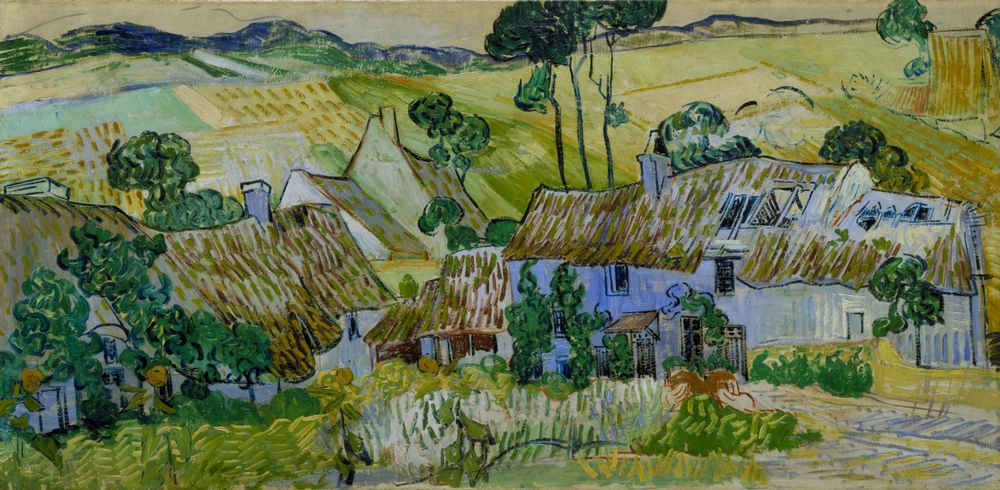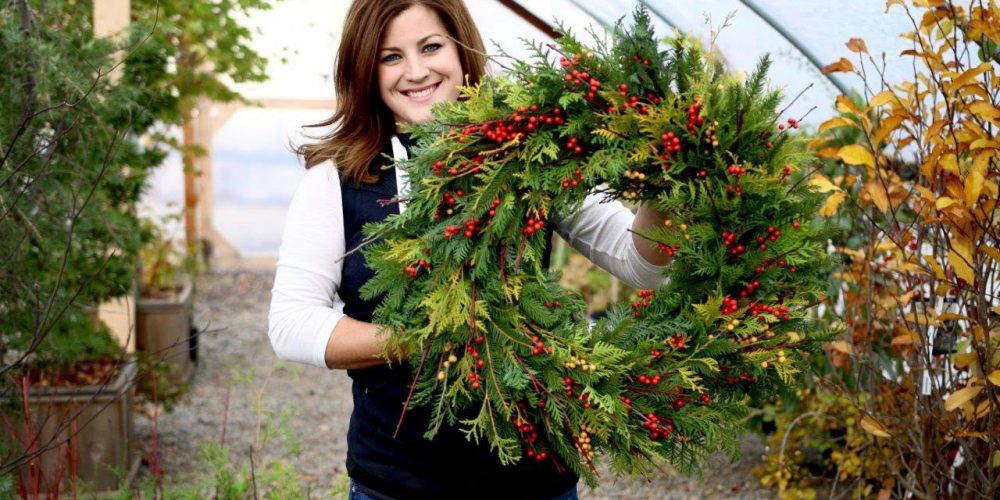The journey of wheat from field to table is the journey of a thousand miles
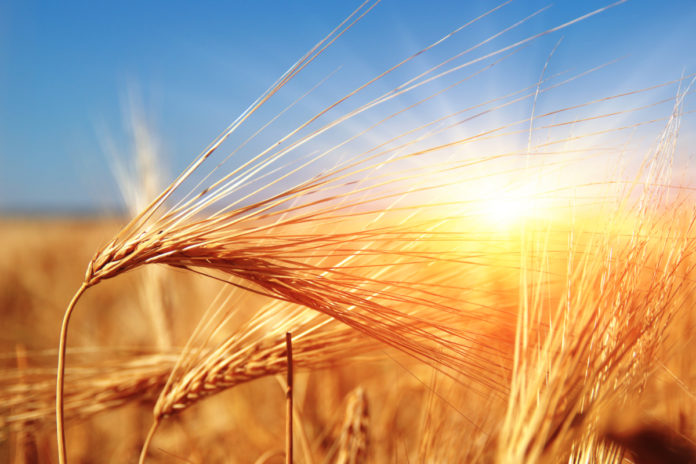
At all times, undoubtedly one of the most respected and ancient human activities is the cultivation of wheat and the production of bread and other food products from wheat for human nutrition. According to official figures, the commercial wheat business in the United States is profitable and is gradually gaining popularity.
The journey of wheat, or the beginning of the wheat life-cycle, is in the field.
Scott Van Allen, who farms south of Clearwater in Sumner County in south-central Kansas, tells the story of his family’s farm. He says he really loves his job.
Kansas mainly grows a class of wheat called hard red winter wheat. This class of wheat is planted in the fall and requires a long cold period (called vernalization) to properly grow. 95% of all wheat grown in Kansas is hard red winter wheat and this is what all-purpose flour is made out of.
This is amazing what an incredible source of life wheat is! 20% of all calories consumed in the world comes from wheat.
Scott is proud that he produces a safe vitally important product. He says, “I think there is a lot of fear around where our food comes from. But hopefully coming straight to the source you can see that we take pride in what we do and we want to produce food that is safe to eat, because our family eats it too.”
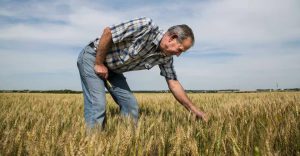
“One thing is clear that harvest time is a race with the clock. Once wheat is ready to be harvested it is important to get it done as fast as possible because one bad storm could dramatically affect the yield. But it is also a waiting game at times. You cannot harvest when there is too much moisture in the grain or you can be penalized once you get to the grain elevator. It’s all a balancing act”, he adds.
Of course, there are many special instruments of determining the moisture content of wheat. But an experienced farmer, based on his many years of practice, can do this himself almost unmistakably. Scott picks some stalks of wheat and rubs them in his hand to check the moisture level to see if it is ready to be harvested. If there was a light rain the night before so the wheat needs to dry slightly before you can begin cutting it.
The quality of the harvested grain depends a lot on the harvesters.
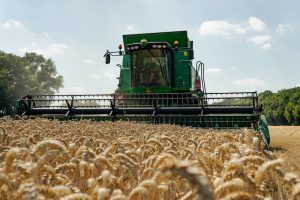
Once the wheat is cut and loaded into trucks, it is taken to a grain elevator and weighed. The price of wheat works much like the stock market. It fluctuates day to day depending on supply and demand. So when the farmers take the wheat to the elevator they can decide if they want to go ahead and sell it, or pay a fee to have the wheat stored but hold onto ownership of it and sell it at a later date.
The 2022/23 season-average farm price for wheat is projected at a record $9.20 per bushel.
But there are times when farmers must sell when the prices are low because they financially cannot hold on until the price rises. When you think that 1 bushel of wheat can make 70 loaves of bread it really puts the price into perspective.
After the wheat is harvested, half of it is exported and the other half stays in the U.S. to be milled.
In Kansas, wheat’s life cycle continues at the Farmer Direct Food Flour Mill. This flour mill prides itself on tracking the wheat from the field to the mill to the store.

The acquisition of Farmer Direct Foods (FDF) represented a major first step by Heirloom Brands in a strategy centered on premium food products oriented toward sustainability, said Timothy S. Webster, CEO of Overland Park, Kan.-based Heirloom Brands.
In FDF, Heirloom has acquired a flour milling business with roots dating back to 1988 and dedicated the creation of a farmer-owned cooperative to promoting the cultivation of white wheat in Kansas.
Over the years FDF has grown largely as a co-packer — a supplier to King Arthur Flour of stone-ground whole white wheat flour, stone-ground whole wheat flour milled from hard red winter wheat and stone-ground organic whole wheat flour. Whole wheat flour is valued because it is produced from the entire wheat grain, including the bran and the germ where most of the nutrients lie.

An invaluable role in the production of high-quality wheat belongs to research work.
Kansas State University (KSU) scientists breed varieties of wheat that are tolerant to a variety of climates and diseases. All wheat they produce is non-GMO. Rather wheat is being cross bred for desired characteristics, including breeding genes from ancient varieties into modern wheat.
KSU scientists are part of a breakthrough study in which an international team of researchers has successfully deciphered all 10 billion letters in the genetic code of a wild ancestor of wheat.
“The relative of wheat is called wild emmer, which is one of the founding crops of human society,” said Eduard Akhunov, professor of plant pathology and wheat genomics at KSU.

“Wild emmer was one of the first crops that was domesticated 10,000 years ago, which was a critical step in moving from hunting and gathering to an agricultural society.”
By knowing the genetic code of wild emmer, scientists can now compare its DNA to modern varieties to fully understand how wheat has evolved over thousands of years. With that information, they can better understand the genes that provide important traits such as drought and heat tolerance, or resistance to various diseases and pests.
“From a biological and historical viewpoint, we have created a time tunnel that we can use to examine wheat from before the origins of agriculture,” said Assaf Distefeld, a professor at Tel Aviv (Israel) University, who led the project.
Kansas State University wheat breeder Allan Fritz already is conducting field trials with wild emmer at the Ashland Bottoms research farm south of Manhattan.
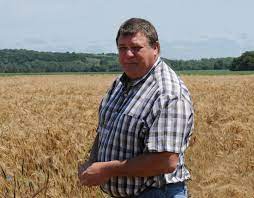
“There’s good evidence that wild emmer contains genes for drought tolerance,” Fritz said. Israeli researchers identified a chromosome that’s produced a 10-15 percent increase in yield under drought—without sacrificing yield potential under well-watered conditions.
Fritz added that he and his team have done preliminary screening of accessions of wild emmer and have found resistance to wheat streak mosaic virus, while reports indicate it also contains genes for resistance to fusarium head blight and stripe rust. Wild emmer genes may also provide added value for wheat-based foods.
However, even with newer technologies to speed up the process, breeding new wheat lines takes a lot of time. Fritz said it will take at least 15 years before traits from these wild wheats will be available in commercial varieties.
“It’s one of those things where, yeah, it’s a really long-term project, but if you don’t ever start it, you never get to the good stuff at the end,” he said. “You need to get the process started and work through it.”
Even so, Fritz added, “I’m really excited about this. We can do some really good things. I think there’s the opportunity to make much better wheat varieties, increase value in wheat for our producers, and to have a healthier product for consumers.”
A pleasant end to the journey of wheat – pastries made from wheat flour on our table!


Homemade white bread. A star bread. Raspberry almond braids… And many-many other healthy and tasty products made from wheat flour. Help yourself!
By Alex Arlander | ENC News
























